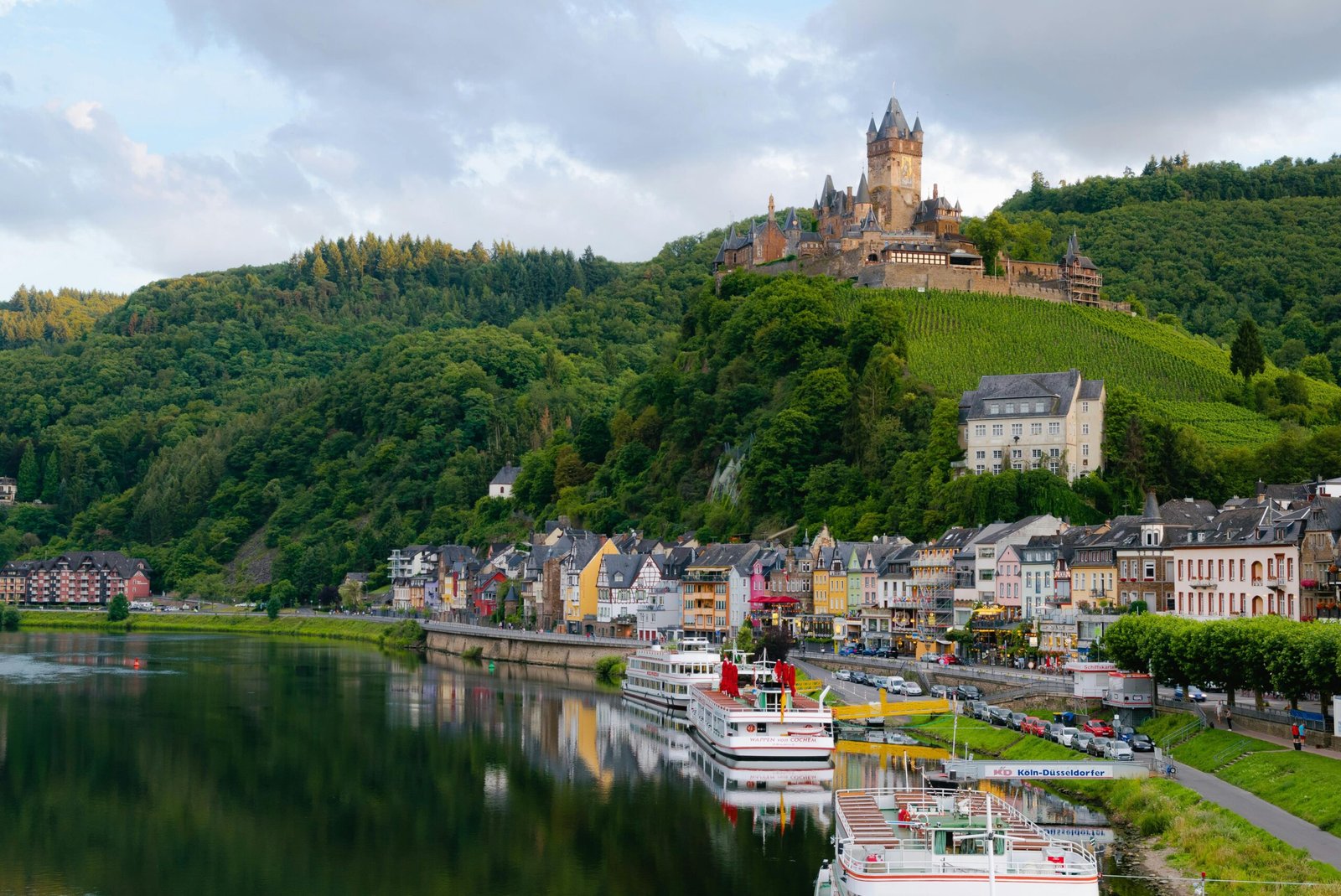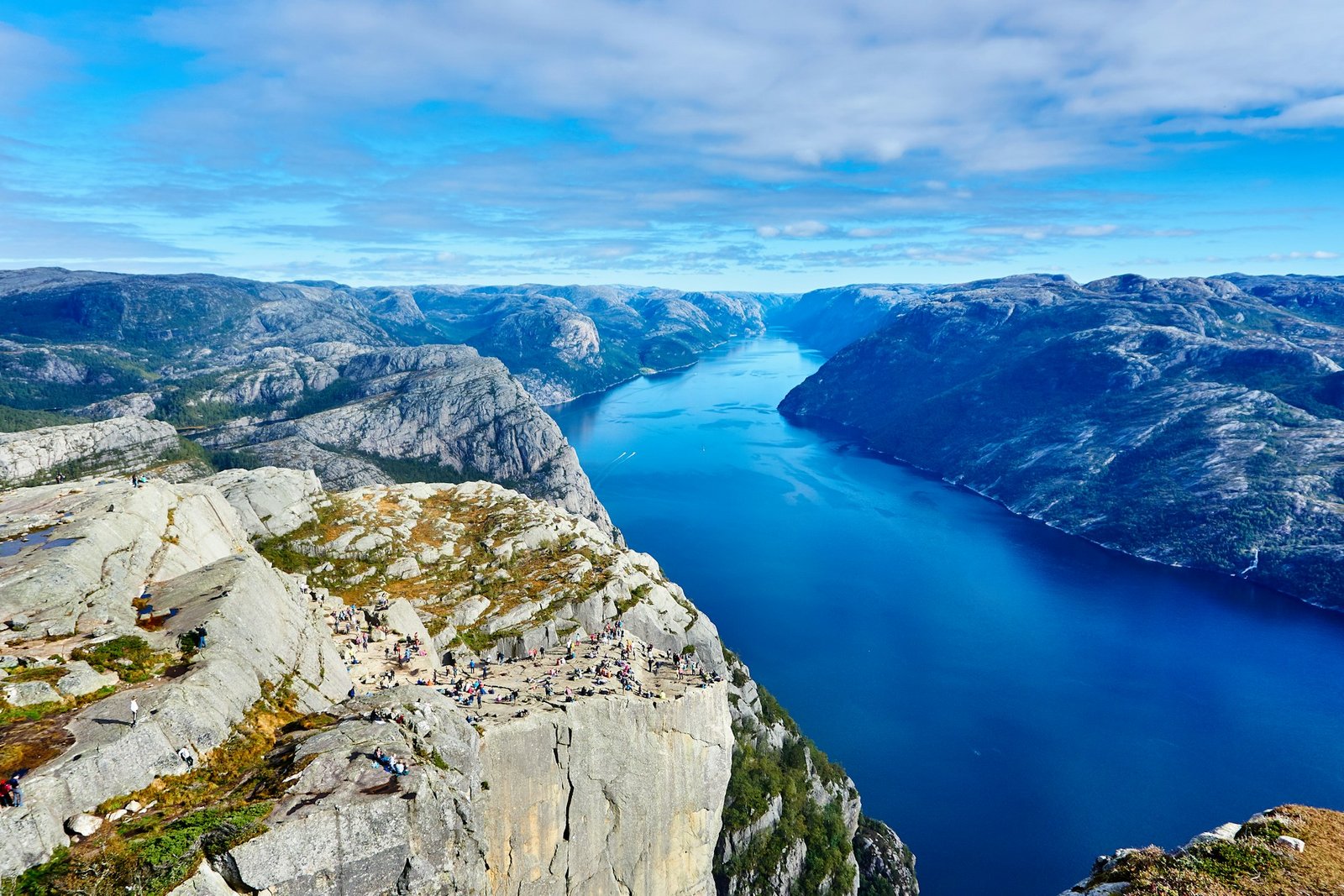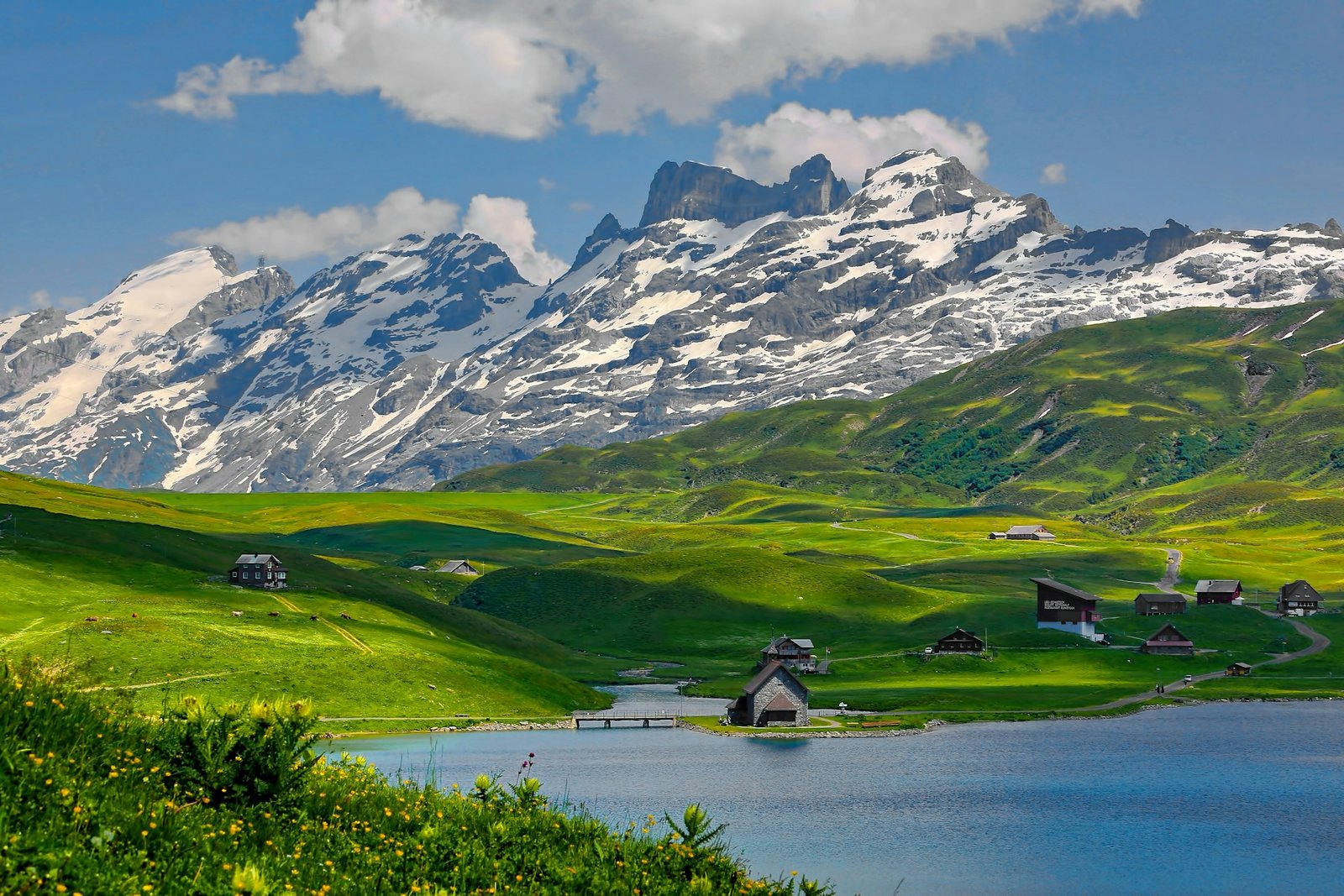I’ve always loved the idea of visiting Switzerland—who wouldn’t? With its stunning mountains, crystal-clear lakes, and picturesque villages, it seems like the perfect destination no matter when you go. But let me tell you, that’s not always the case. While it might sound odd, there is indeed a worst time to visit Switzerland, and if you want your trip to be unforgettable (for the right reasons), you’ll want to avoid these months.
So, when is the worst time to visit Switzerland? It’s not during the snowy winter, as many believe. It’s the shoulder seasons—late spring and late autumn—when things can get a bit tricky. Let me explain why. Stick around, and I’ll share exactly what to avoid and how to plan around it.
Quick Guide: Worst Time to Visit Switzerland
For those short on time, here’s a concise breakdown of the worst time to visit Switzerland and tips for a better trip.
Worst Time to Visit:
- Late Spring (April-May): Unpredictable weather, closed hiking trails, and many attractions shut for maintenance.
- Late Autumn (October-November): Gray skies, rain, and fog dominate, with fading fall foliage and limited outdoor activities.
Why You Should Avoid These Months:
- Unpredictable Weather: Sunny one day, rainy or snowy the next, especially in the mountains.
- Closed Attractions: Popular attractions, scenic train rides, and cable cars are often shut down for maintenance.
- Limited Outdoor Activities: Hiking trails at higher elevations are either closed or snow-covered.
Best Times to Visit Instead:
- Early Summer (June): Warm weather, blooming flowers, open hiking trails, and fewer crowds.
- Early Autumn (September-early October): Beautiful fall foliage, mild weather, and less tourist traffic.
- Winter (December-February): Perfect for skiing, snowboarding, and experiencing charming snow-covered villages.
Key Travel Tips:
- Book Scenic Trains in Advance: Routes like Glacier Express fill up fast.
- Use a Swiss Travel Pass: Unlimited travel across trains, buses, and boats.
- Hire Local Guides: For hidden trails and authentic experiences.
By steering clear of the worst months, you’ll make the most of your Swiss vacation!
Understanding Switzerland’s Seasons—Why Timing Matters

If you’re like me and want to make the most of your time, understanding how Switzerland’s seasons work is crucial. When I first traveled there, I quickly realized how much the season you choose can make or break your experience.
Switzerland isn’t a one-size-fits-all destination. Each season brings its own vibe, activities, and yes—potential downsides. To avoid the worst time to visit Switzerland, you need to know what each season offers.
Switzerland’s Four Seasons: A Quick Overview
- Winter (December-February): Picture-perfect snowy landscapes, cozy villages, and world-class ski resorts. This is when Switzerland is a winter sports paradise.
- Spring (March-May): A transition season with blooming flowers in lower areas, but unpredictable weather in higher elevations. It’s hit or miss.
- Summer (June-August): Warm, sunny days perfect for hiking and outdoor activities, but also peak tourist season, which means higher prices and bigger crowds.
- Autumn (September-November): Known for beautiful fall foliage early on, but once October hits, things get dreary fast.
The thing is, all of these seasons have their perks. But if you pick the wrong time—specifically late spring or late autumn—your dream trip can turn into a series of missed opportunities.
Winter is NOT the Worst Time to Visit Switzerland—Here’s Why

Most people assume winter would be the worst time to visit Switzerland because of the cold. But in my experience, winter is actually one of the most magical times to be there.
What’s So Great About Winter?
- Snow-Covered Magic: The Alps are at their absolute best in winter. The snow-capped peaks look like something out of a postcard, and you can get stunning photos without even trying.
- Ski Heaven: If skiing or snowboarding is your thing, Switzerland has some of the best slopes in the world. Resorts like Zermatt, Verbier, and St. Moritz are packed with action, but even if you’re not a skier, the atmosphere is unbeatable. If you’re planning to visit Zermatt, check out the local tourism board for updated info.
- Cozy Villages: The Swiss do cozy really well. After a day in the snow, there’s nothing like warming up in a little alpine cabin, sipping hot chocolate or mulled wine by the fire.
But don’t get me wrong—winter does have some downsides.
Winter Downsides:
- Crowds in Ski Resorts: Popular ski resorts can get crowded. I’ve personally felt a little overwhelmed by the sheer number of people in places like Verbier during peak season. If you want something quieter, consider smaller resorts.
- Cold Weather: Yes, it’s cold, but the dry cold in Switzerland is much more bearable than damp winters in other parts of Europe.
All in all, winter is definitely not the worst time to visit Switzerland. In fact, I’d argue it’s one of the best—provided you pack warm clothes and plan ahead.
The Real Worst Time to Visit Switzerland: Late Spring (April-May) and Late Autumn (October-November)

Late Spring (April-May): The Season of Uncertainty
I made the mistake of visiting Switzerland in April once, and let me tell you—it wasn’t what I expected. April and early May are not the best time to experience Switzerland, especially if you’re dreaming of those perfect mountain hikes or scenic train rides.
Here’s Why Late Spring Is the Worst:
- Unpredictable Weather: One minute you’ve got sunny skies, and the next you’re dodging rain or even snow. You never know what to expect, which makes planning difficult.
- Snow-Still-In-Higher-Elevations: Want to go hiking? Not in April. Many of the higher trails are still covered in snow. I’ve tried hiking during this time, and it was a muddy, frustrating experience.
- Ski Resorts Shutting Down: By April, most of the ski resorts are winding down for the season. So, if you were hoping to get in some last-minute skiing, you’ll be disappointed.
- Closed Attractions: A lot of the mountain attractions like cable cars and scenic railways shut down for maintenance in late spring. When I visited in April, I missed out on several key spots because of closures.
Late Autumn (October-November): The Gray Zone
Then there’s late autumn. I’ve always found October and November to be the least exciting months to visit Switzerland. The vibrant fall colors you might expect have faded, and the whole country feels like it’s in a gray zone—literally and figuratively.
Why Late Autumn Is the Worst:
- Gray, Rainy, and Foggy: The weather is downright depressing. The beautiful Alpine views are often hidden behind fog, and you’ll find yourself trudging through wet, rainy conditions.
- Fall Colors Have Faded: Early autumn is gorgeous, with golden leaves and crisp air. But by late October, the trees are mostly bare, and the landscape looks dull.
- Tourist Infrastructure Winding Down: Just like in late spring, a lot of attractions are closed for maintenance or getting ready for the winter season. This leaves you with fewer options for things to do.
- Hiking Trails Close: Many mountain passes and hiking trails start closing for the season as snow begins to fall at higher elevations.
Travel Tip: If you do visit in autumn, stick to early October when the weather is still decent, and the fall foliage is at its peak.
FAQs About the Worst Time to Visit Switzerland
1. Can I Still Have a Good Time in Switzerland in April or November?
Yes, but you’ll need to adjust your expectations. Cities like Zurich or Geneva still have plenty to offer—museums, cultural events, and great food. However, if you’re coming for outdoor activities or scenic train rides, you’ll probably be disappointed.
2. What About Hiking in April?
I’ve tried it, and I wouldn’t recommend it unless you’re sticking to lower elevations. Most high-altitude trails are still snow-covered or muddy from melting snow. If you’re serious about hiking, you’re better off waiting until June.
3. Can I Experience Swiss Culture in the Off-Season?
Absolutely. Swiss cities are cultural hubs all year round. You can enjoy museums, galleries, and local cuisine, but the rural charm of Switzerland—the beautiful mountain villages—won’t be as impressive during the off-season.
What You’ll Miss During the Worst Time

If you decide to visit during late spring or late autumn, there are several iconic Swiss activities you’ll likely miss out on:
- Scenic Train Rides: Famous routes like the Glacier Express and Bernina Express often close for maintenance in April or November, so don’t count on them.
- Hiking: Higher-altitude hiking is pretty much off the table in April and November. You’ll have limited options, and they won’t be the most scenic.
- Cable Cars and Mountain Railways: Many of the mountain cable cars, like those leading up to Jungfraujoch or the Matterhorn, shut down for maintenance during these months.
- Lake Cruises: The beautiful lake cruises that Switzerland is famous for also tend to operate on reduced schedules during the off-season.
When Should You Visit Instead? The Best Alternatives

Based on my personal experience, here’s when you should consider visiting to get the most out of Switzerland.
1. Early Summer (June):
June is hands-down one of the best times to visit. The weather is warm, the trails are open, and the crowds haven’t fully arrived yet. You’ll get the best of both worlds—plenty of activities and fewer tourists.
2. Early Autumn (September-Early October):
Early autumn is another winner. The fall foliage is beautiful, the weather is still mild, and the summer crowds have gone home. I’ve had some of my best trips to Switzerland during this time.
3. Winter (December-February):
If you love skiing or just want to experience a true winter wonderland, then winter is perfect. Sure, it’s cold, but the beauty and charm of a Swiss winter make it well worth it.
Check the weather forecast before your trip to ensure a smooth experience.
5 Proven Strategies to Enhance Your Swiss Travel Experience
- Plan Around Events and Festivals: Local festivals add a lot of character to your trip. Whether it’s the Montreux Jazz Festival in July or a Christmas market in December, attending one of these is a great way to experience Swiss culture.
- Explore Off-the-Beaten-Path Destinations: Consider visiting lesser-known places like Thun or Chur instead of sticking to tourist-heavy spots. You’ll get the same stunning views and charming atmosphere, but with fewer people around.
- Book Scenic Train Rides in Advance: Don’t leave this to the last minute. I learned this the hard way! Scenic trains like the Glacier Express and Bernina Express can sell out quickly, especially in peak seasons. Booking early guarantees you the best seats with the most stunning views.
- Use a Swiss Travel Pass: This is one of the best money-saving tips I’ve come across. The Swiss Travel Pass gives you unlimited access to the Swiss Travel System, covering trains, buses, and even boats. It’s a great deal, especially if you plan on hopping between different cities or regions.
- Hire a Local Guide for Hidden Gems: If you want to experience Switzerland beyond the tourist hotspots, hiring a local guide is the way to go. I’ve done this a couple of times, and the guides always know the hidden trails and less-traveled spots that offer an authentic Swiss experience.
By following these strategies and avoiding the worst times to visit, you’ll ensure that your trip to Switzerland is unforgettable for all the right reasons.
Conclusion: Why You Should Avoid the Worst Time to Visit Switzerland

Timing is everything when it comes to travel, and Switzerland is no exception. While it’s easy to assume that winter or summer might pose the biggest challenges, it’s actually the shoulder seasons—late spring and late autumn—that can limit your experience. The unpredictability of the weather, the closure of key attractions, and the overall gray, dreary atmosphere make these the worst times to visit Switzerland.
But don’t worry, planning your trip around the best times—like early summer, early autumn, or winter—will guarantee you get the most out of this beautiful country. By avoiding the worst months, you’ll enjoy all that Switzerland has to offer, from stunning mountain hikes and scenic train rides to charming villages and vibrant cultural events.
So, before you book those plane tickets, consider the time of year carefully. Trust me—your Swiss adventure will be so much better if you avoid the pitfalls of April-May and October-November.
FAQs: Practical Tips for Planning Your switzerland Trip
What Are the Best Months to Visit Switzerland for Budget Travelers?
The shoulder seasons (April-May and October-November) are technically cheaper due to lower demand. However, since many attractions are closed and the weather can be unpredictable, you might not get the best value for your money. Instead, aim for June or September when the weather is pleasant, and prices are still more reasonable than peak summer.
How Far in Advance Should I Book?
If you’re traveling during the summer or winter months, especially to popular areas like Zermatt, Interlaken, or Lucerne, it’s best to book 3-6 months in advance. This ensures you get the best deals on accommodation and train passes.
Can I Experience Swiss Festivals During Off-Season?
Swiss festivals typically occur during the high seasons of summer and winter. Notable examples include the Montreux Jazz Festival in July and the Christmas markets in December. During the shoulder seasons, there are fewer large-scale events.





